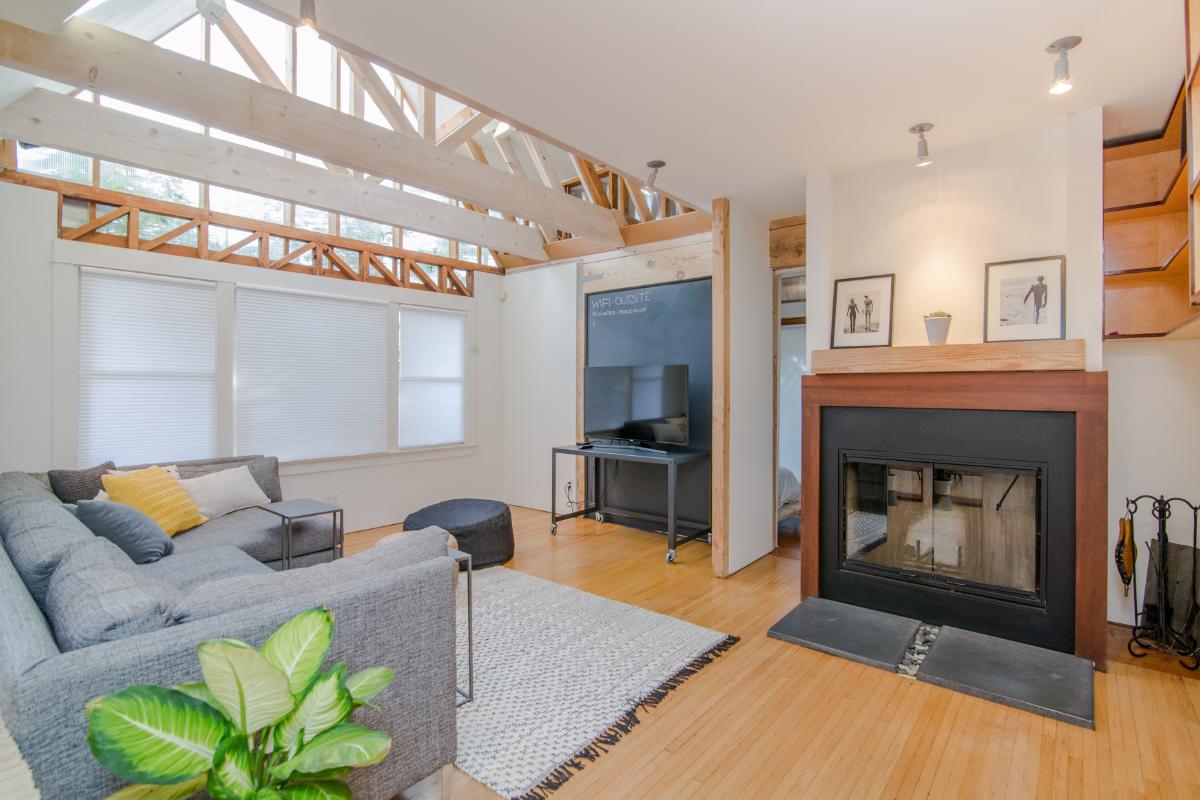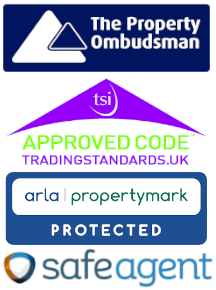
Have you got a potential tenant ready to move into your rental property? Make sure you’ve thought of everything you need to know with our handy move-in checklist.
Ensure the property is safe
Before you can let any rental property to a tenant, you have to ensure the property passes the Fitness for Human Habitation Act.
A gas safety certificate is one legal requirement that landlords have to have for their rental property. All rental properties must have a gas safety check each year.
The gas safety certificate will give a breakdown of all the appliances that have been tested, the results of the inspection, any potential issues and what’s required to make them safe, as well as when they were last tested and by who. Landlords should provide tenants with a current copy of the gas safety certificate and then provide a copy of each renewal.
Landlords are also responsible for ensuring there are enough smoke alarm and carbon monoxide detectors located within a property. There has to be a smoke alarm for each floor of a property, and a carbon monoxide alarm for any room that has a solid fuel burning appliance. It is good practice to provide a carbon monoxide alarm in any room with a boiler too.
There are legal obligations for landlords with electrical safety too. By law, landlords must ensure that the electrical installation in a rented property is safe when tenants move in. These must then be maintained in a safe condition throughout the tenancy and it is recommended that any portable electrical appliances are tested annually with an electrical installation condition report (EICR) being completed every five years. If your property is a house in multiple occupations (HMO) then you are required to have an EICR completed every five years.
If a landlord is providing furnishings for a property, they need to ensure they meet the Furniture and Furnishings (Fire Safety) Regulations Act and are fire resistant. The penalty for not having fire resistant furniture can be a fine up to £5,000 or even a prison sentence. However, the rule only applies to a landlord’s possession, rather than a tenant’s furniture.
Check your tenant’s Right to Rent
Before letting a property to any tenant, you have to carry out right to rent checks. This involves checking an approved document, such as a passport, to ensure that the prospective tenant is legally allowed to reside in the UK. You must also complete this check on any occupier over the age of 18 years. Make sure that they are all in attendance when you hand over keys and collect copies of the ID, we recommend that you take a photo of the person holding that document. Remember you will need to keep these stored in accordance with General Data Protection RegulationS (GDPR).
If a landlord fails to carry out these checks, they could face fines and in some cases be sentenced to prison. You may also find that this impacts your ability to claim on any rent protection, legal eviction or guarantee insurances.
Tenant referencing
If you want to avoid problematic tenants, the referencing process should be your first port of call when screening potential tenants. The referencing process can give a good insight into whether a prospective tenant will likely pay your rent on time and look after your property.
Referencing tends to involve certain checks into a tenant’s background, taking into account their employer, salary, credit check, as well as references from previous landlords.
From 1st June 2019, you cannot charge any fees related to these checks and must cover the cost of them yourself. Visit the Tenant
Fees Act 2019 for more details on this.
Tenancy agreement
It’s a good idea to have a written tenancy agreement in place prior to your tenant moving into your rental property. Although a written tenancy agreement isn’t mandatory, it’s beneficial to have one so that both landlords and tenants know their rights and terms with the tenancy in the rental property.
Whether you have a tenancy agreement in place or not, there are still a number of responsibilities landlords and tenants have to adhere to. These include the right for a tenant to live in a safe property, to know who their landlord is and be provided with a UK address for them. They also have the right to have their deposit protected and returned to them at the end of the tenancy, you must notify the tenant of any circumstances which may lead to their deposit being retained in part or in full.
Tenants will need to know how much rent to pay, when and how to pay this plus any obligations they have under their tenancy such as utilities or their use of the property.
There are various types of tenancies available. The most common tenancy is an assured shorthold tenancy. However, in some cases, an excluded tenancy or licence may be more applicable, for example, if the tenant will be living or sharing certain rooms with the landlord. Make sure you know which is the right one for your tenant.
Deposit protection scheme
It is a landlord’s responsibility to protect a tenant’s deposit in a tenancy deposit protection scheme. This has to be done within 30 days of receiving a deposit and you must provide the scheme details along with prescribed information to your tenant.
There are a number of government-back schemes for landlords to use, such as the Deposit Protection Service, MyDeposits and the Tenancy Deposit Scheme.
Provide an EPC
All tenants have a right to know a property’s EPC rating. The Energy Performance Certificate (EPC) gives a good idea into the energy efficiency of a property, as well as an estimate into energy bills.
The EPC takes into account a number of factors relating to a rental property such as its age, insulation levels, window types and the types of lighting used throughout the property.
EPC ratings aren’t just beneficial for tenants though, as they can also provide handy ways for landlords to save money through making changes to their home. Landlords must provide a copy of the property EPC at the start of the tenancy and have this renewed on expiry. EPC's are valid for 10 years and there is a minimum standard requiring that they have an E rating at least.
Some properties are exempt and you can check that they are registered on the PRS
exemptions register or you can Register
an Exemption.
Inventory
While it is not a legal requirement for landlords to provide an inventory to tenants at the start of a tenancy, we would always recommend doing so. This is because it provides both landlords and tenants detailed evidence of the specific condition of a property when a tenant first moves in.
It is also beneficial to include photos within an inventory to ensure a more accurate report.
An inventory can help alleviate any disputes between a landlord and tenant that could otherwise arise when it comes to the end of the tenancy agreement. It can particularly prove useful should a landlord need to deduct damage costs from a tenant’s deposit.
Deposit schemes recommend that you arrange for these to be completed by an independent professional clerk, you can combine these with a Check-In service to reduce costs and record the handing over of keys and utility readings. You can also use the original Inventory as part of any future Check Out as a checklist and comparison of the condition when returning the property.
Other documents
You will need to provide other documents at the start of the tenancy and usually any updated ones when they come out or on renewal of the tenancy. These include the How to Rent Guide which is available on the government website, a copy of your property licence and also your lease agreement for leasehold properties. It is important that you highlight any specific obligations to your tenant that may exist under the terms of the lease.
Below is a handy checklist of documents you must or should provide at the start of a tenancy, failure to do this could prevent you from serving notices and gaining possession.
1. How to Rent Guide available from the government website
2. Current Safety Certificate - Gas, EICR, PAT or Electrical
3. Energy Performance Certificate
4. Property licence
5. Copy of lease
6. Tenancy agreement
7. Deposit Scheme details and Prescribed Information
8. Property condition report or Inventory
9. Appliance manuals & warranty details
Landlord insurance
Although landlord insurance isn’t compulsory, it offers that extra protection should any incidents arise whilst a tenant is living in your property.
Landlord insurance can cover some of the costs you may otherwise be liable for in your rental property. This includes accidental damage, such as covering the costs of damage caused by a flood or fire, as well as financial protection should a tenant fail to pay their rent.
You can also get contents insurance which will cover any damage or theft of items such as beds, sofas and TVs.
Welcoming your new tenant
Get your relationship with your tenant off to a good start by ensuring their new home is thoroughly clean and maintained. Double check that all appliances work for a smooth move-in process for your tenant.
Why not go above and beyond for your new tenant? You could welcome them to their new home with a gift, such as flowers or a bottle of wine.
It's always worth having a folder with copies of appliance manuals, warranties or instructions and why not throw in a couple of local takeaway menus for good measure!
Landlords, if you’re looking for good tenants for your property, why not list your property through our platform? Our ‘Good Landlord’ package is affordable and includes tenant reference checks, an online signature tenancy pack, as well as deposit collection and lodging.







